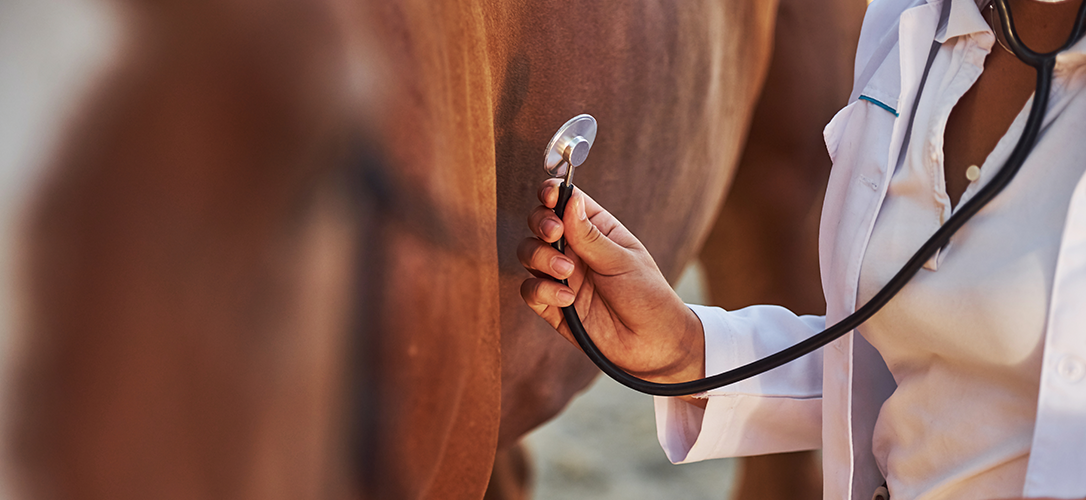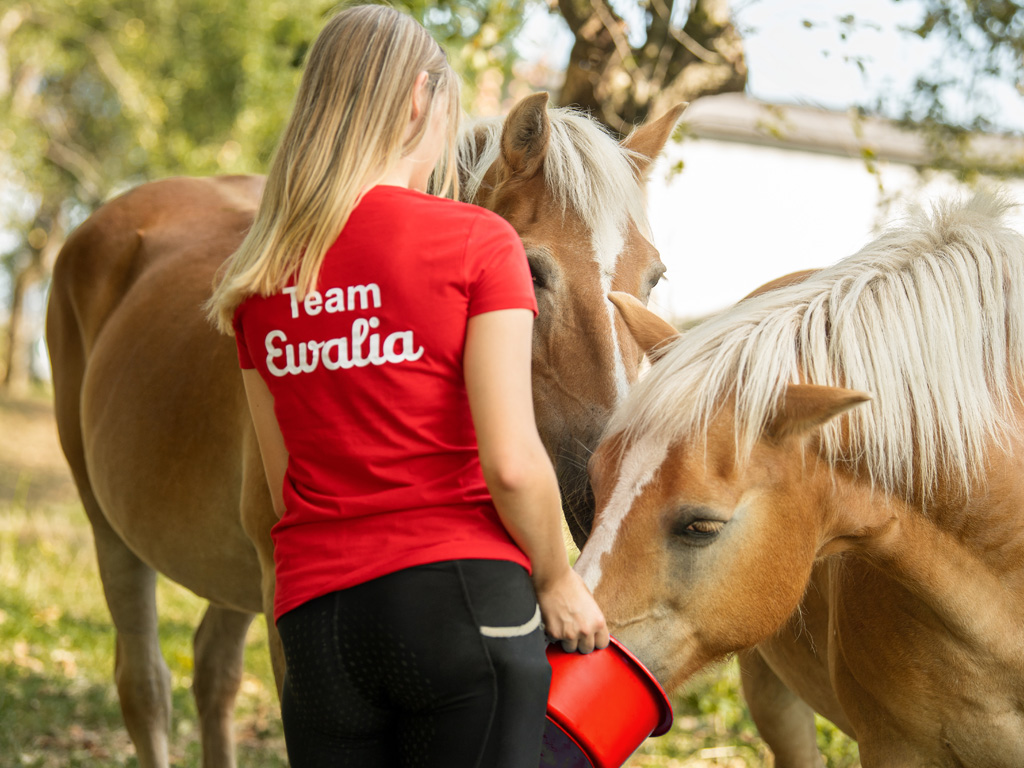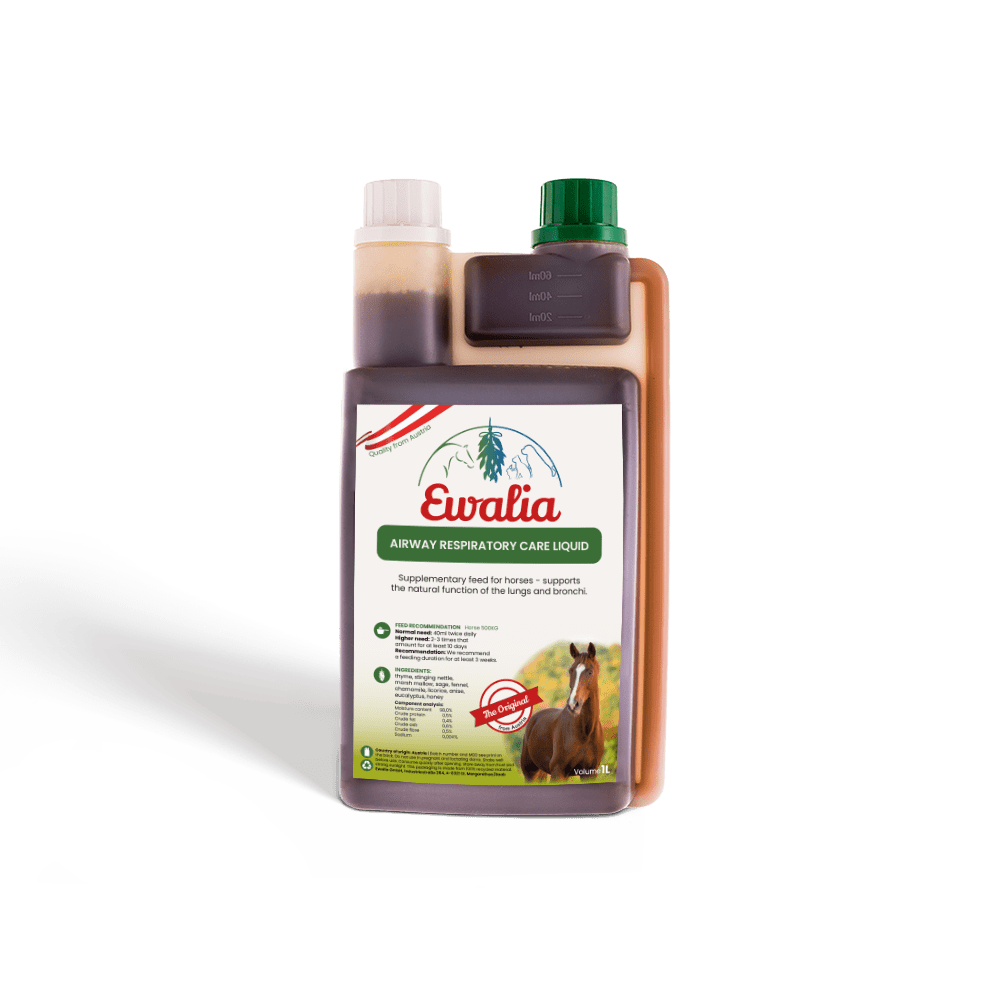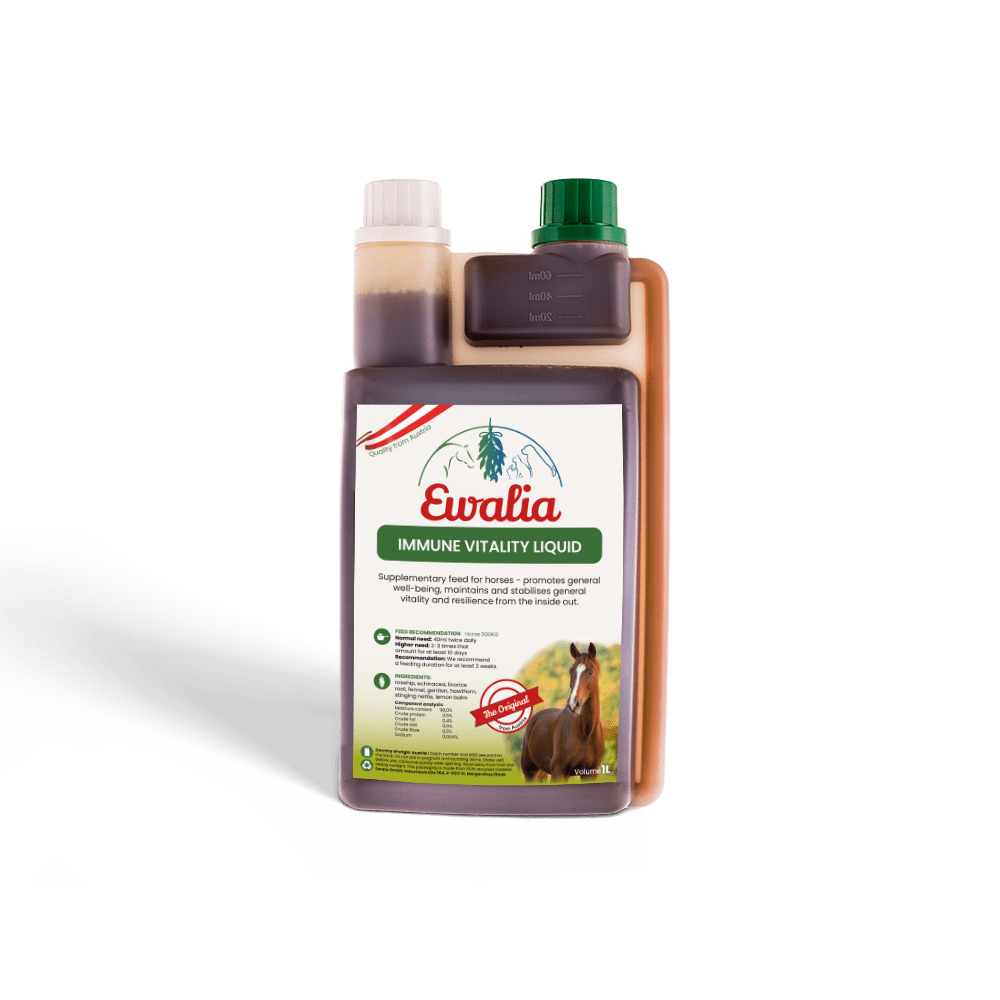Coughing in horses

The sudden change from autumn to winter is over and you can already hear horses coughing in their stables, the hall or the paddocks. The symptoms range from a short cough when starting to trot to constant coughing while eating hay and a purulent nasal discharge when breathing under pressure.
In horse circles they say that there is hardly any chance of improvement in chronic respiratory disorders. So must the horse just cope with chronic coughing? Not necessarily, as there are many ways to treat respiratory problems! The following is a summary on the topic of the lung, prevention of respiratory problems and feeding natural herbs as a supportive treatment for coughing in horses.
How do I identify respiratory problems in my horse?
Some lung problems occur both when the horse is resting as well as during exercise. The respiratory rate of the affected horse can increase even at rest. The horse literally pumps / squeezes the air out of its lungs until in severe, chronic lung diseases, a type of muscle groove becomes visible externally, a so-called "steam channel". Purulent nasal discharge can be another sign of respiratory tract infection.
The following is a list of signs of possible respiratory tract problems:
- Nasal discharge from one or both sides, opaque (yellow, purulent)
- Clear nasal discharge that continues over a long period
- Respiratory rate of more than 15 breaths per minute at rest
- Sporadic to frequent coughing
- Cough caused by irritation, even where there isn't much dust around
- Coughing when the larynx is stimulated
- Drop in performance (depending on severity and discipline)
- Longer regeneration phase
- Pathological breathing noises
- Fever
- Shortness of breath or laboured breathing
Not all the factors will occur simultaneously There certainly are respiratory disorders that are genetic or congenital. The most common diseases of the bronchi and lungs are acute bronchitis and subsequent chronic obstructive bronchitis (COB). According to Gerber & Straub the latter is divided into two different diseases. IAD (inflammatory airway disease) can have unclear or multi-factor causes and affect all age groups, and it has a specific clinical and cytological clinical profile. It is regarded as a mild COB. Medium- to high-grade COB includes RAO (recurrent airway obstruction). The horses affected are mostly older than 7 years. This has asthma-like symptoms and as well as specific inflammatory parameters. Gerber & Straub also describe clinical pictures with hardly any coughing fits or only slight coughing. Those cases are predominantly characterised by a severe decline in performance and require bronchoscopy to diagnose the disease. A veterinarian that you trust can make the definitive diagnosis.
What causes diseases of the lungs and bronchi in horses?
In general, the factors that lead to respiratory diseases can be classified into exogenous (external) and endogenous (internal).
The exogenous factors are:
- Mechanical, caused by dust or smoke
- Temperature-induced, through fire in the stable or cold
- Chemical, by ammonia
- Infectious, by viruses, bacteria, molds and/or parasites
- Immunogenetic, by fungi and mildew
Endogenous factors include:
- Cardiovascular problems
- Toxins (poisons)
- Metabolic derailment
- Metastasis of a tumour or infection
The most common causes, however, are suboptimal husbandry and feeding of horses. Poor ventilation in stables, increased ammonia concentration combined with litter or roughage of inferior quality usually result in too high a burden on the immune system and the lungs. Acute bronchitis is a possible consequence. If this does not heal completely, the infection can become chronic (IAD). Coughing, nasal discharge or a drop in performance should therefore not be taken lightly!
How can one avoid respiratory problems or help the affected horse?
Prevention is the best medicine! The conditions the horse are kept in should be optimised and the roughage be of the highest quality. Regular deworming, strengthening of the immune system and the metabolism as well as nutrition adapted to its needs, including an adequate supply of minerals, form the basis for a healthy horse. You can prevent strain on your horse's respiratory system in the following ways:
Ride in an environment that is low in dust
Ride in the outer arena more often or use the hall only after the floor has been sprayed!
Dust-free bedding
Make sure that the bedding is of high quality (dust from mold is particularly dangerous) or change to dust-free types of bedding like straw pellets or forest floor litter.
Dust-free roughage
Make sure that this is of the highest quality as well! RAO horses in particular should not come into contact with allergens such as feed mites or mold spores. You can also moisten the hay (important: feed directly after wetting!) or submerge it completely in water for 10 minutes (important: don't leave it in the water for longer than 30 minutes and feed immediately!)
Good ventilation and lots of fresh air
If your horse is not kept in the open stable, an outdoor box or paddock box with plenty of fresh air is recommended. If this is not possible, make sure that it the stable is ventilated and misted regularly. A daily gallop will not only improve your horse's lungs but also provide variety, exercise and joie de vivre for your darling!
Dust-free stable work
Limit stable work (misting, feeding, mucking out) to when the horses are in the paddock or outside the barn. Dust lingers in the air for a long time after being swept up, even though you can't see it. Before sweeping, you can water the stable corridor to bind the dust particles!
Use less ammonia
Mist several times a day or think of a solution (litter with natural rotting, peeing places) that produces less ammonia.
Herbs for supportive treatment of coughing in horses
Herbs that contain active ingredient groups such as saponins, flavonoids, mucilages and essential oils are particularly suitable for supporting the upper respiratory tract. Saponins increase mucus expectoration and make it less viscous (facilitate coughing and mucous dissolution). They strengthen the bronchial muscles and the movement of the cilia. Mucilage is said to have anti-inflammatory and anti-irritant effects. Antiphlogistic, antimicrobial, antiviral, antioxidant and spasmolytic (expectorant) effects, among others, have been observed when using flavonoids. Essential oils also have expectorant, antiseptic and anti-inflammatory properties.
A number of herbs meet the criteria mentioned above and have an additional bronchodilatory effect. They are mainly used for catarrhs (mucosal inflammation of the respiratory system) and respiratory tract infections. A few examples:
Aniseed
The special feature of aniseed fruits is their high proportion of essential oils (2-6%). The fruit is said to have expectorant, mild spasmolytic (antispasmodic), carminative (gas-releasing), antibacterial, antifungal and antiviral effects.
Thyme
Thyme contains 1-2.5% essential oils, among other ingredients. These play a significant role as expectorant (slime-releasing cough medicine) and bronchospasmolytic (bronchial anticonvulsant) in acute and chronic bronchitis and catarrh of the upper respiratory tract.
Okra
The root contains 10-20% mucilage as well as pectins. The mucilage forms a special protective mucus layer in the mouth and throat area and so alleviates irritation that leads to coughing.
Licorice
Saponins are among the most important ingredients in licorice root. One of the saponins is glycyrrhizin, which in veterinary medicine is used to treat inflammation of the bronchi in horses (secretolytic and expectorant).
True sage
True sage contains different essential oils, tannins and flavonoids. Real sage has antiviral, antibacterial, and spasmolytic effect and stimulates appetite through the bitters it contains.
True camomile
True chamomile contains mucilage, a low proportion of essential oils and flavonoids. True chamomile is traditionally used for anti-inflammatory and antimicrobial purposes and for digestive support. It has other uses in veterinary medicine as well, including wound healing, as radical catcher and to stimulate coughing up.
Compiled by: Bianca Becker-Slovacek on 24/01/2018
Our tip: Prevention is the best medicine! Design your horse's environment to be "cough-friendly" right form the start!
Source:
- Gerber V, Venner, M., & Straub R. (2016): Equine diseases. Internal Medicine (2nd edition) (V. Gerber, & R. Straub, eds.) Bern: utb.
- Pahlow, M. (2013): The big book of medicinal plants. Hamburg: Nikol Publishers.
- (V. Gerber, & R. Straub, eds.) Bern: utb. Reichling, J., Gachnian-Mirtscheva, R., Frater-Schröder, M., Di Carlo, A., & Widmaier, W. (2008). Herbalism for the veterinary practice Berlin-Heidelberg: Springer Medizin Verlag.















